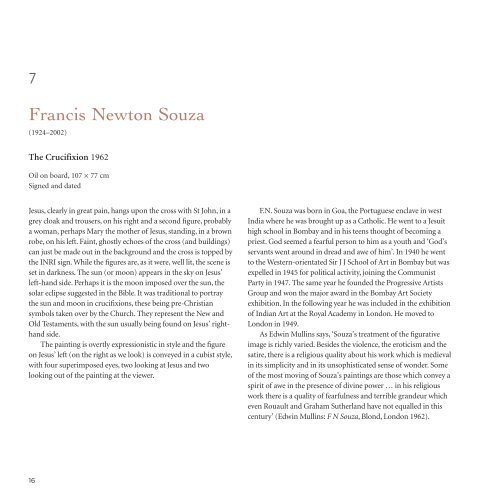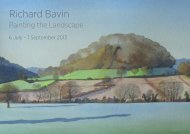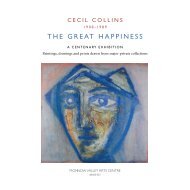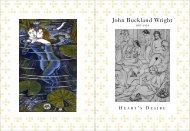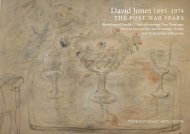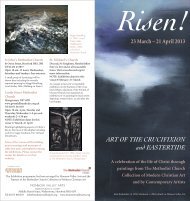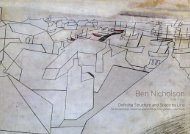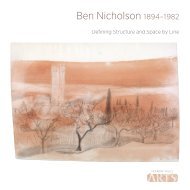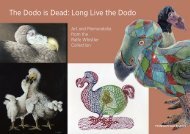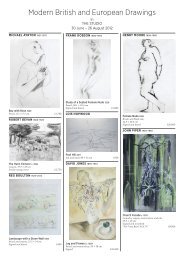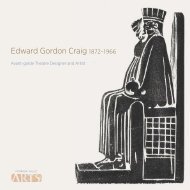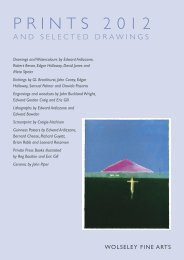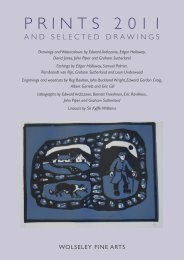Risen Catalogue - Monnow Valley Arts Centre
Risen Catalogue - Monnow Valley Arts Centre
Risen Catalogue - Monnow Valley Arts Centre
You also want an ePaper? Increase the reach of your titles
YUMPU automatically turns print PDFs into web optimized ePapers that Google loves.
7Francis Newton Souza(1924–2002)The Crucifixion 1962Oil on board, 107 × 77 cmSigned and datedJesus, clearly in great pain, hangs upon the cross with St John, in agrey cloak and trousers, on his right and a second figure, probablya woman, perhaps Mary the mother of Jesus, standing, in a brownrobe, on his left. Faint, ghostly echoes of the cross (and buildings)can just be made out in the background and the cross is topped bythe INRI sign. While the figures are, as it were, well lit, the scene isset in darkness. The sun (or moon) appears in the sky on Jesus’left-hand side. Perhaps it is the moon imposed over the sun, thesolar eclipse suggested in the Bible. It was traditional to portraythe sun and moon in crucifixions, these being pre-Christiansymbols taken over by the Church. They represent the New andOld Testaments, with the sun usually being found on Jesus’ righthandside.The painting is overtly expressionistic in style and the figureon Jesus’ left (on the right as we look) is conveyed in a cubist style,with four superimposed eyes, two looking at Jesus and twolooking out of the painting at the viewer.F.N. Souza was born in Goa, the Portuguese enclave in westIndia where he was brought up as a Catholic. He went to a Jesuithigh school in Bombay and in his teens thought of becoming apriest. God seemed a fearful person to him as a youth and ‘God’sservants went around in dread and awe of him’. In 1940 he wentto the Western-orientated Sir J J School of Art in Bombay but wasexpelled in 1945 for political activity, joining the CommunistParty in 1947. The same year he founded the Progressive ArtistsGroup and won the major award in the Bombay Art Societyexhibition. In the following year he was included in the exhibitionof Indian Art at the Royal Academy in London. He moved toLondon in 1949.As Edwin Mullins says, ‘Souza’s treatment of the figurativeimage is richly varied. Besides the violence, the eroticism and thesatire, there is a religious quality about his work which is medievalin its simplicity and in its unsophisticated sense of wonder. Someof the most moving of Souza’s paintings are those which convey aspirit of awe in the presence of divine power … in his religiouswork there is a quality of fearfulness and terrible grandeur whicheven Rouault and Graham Sutherland have not equalled in thiscentury’ (Edwin Mullins: F N Souza, Blond, London 1962).16


